Adnan Noor Mian
Non-contact Lung Disease Classification via OFDM-based Passive 6G ISAC Sensing
May 15, 2024



Abstract:This paper is the first to present a novel, non-contact method that utilizes orthogonal frequency division multiplexing (OFDM) signals (of frequency 5.23 GHz, emitted by a software defined radio) to radio-expose the pulmonary patients in order to differentiate between five prevalent respiratory diseases, i.e., Asthma, Chronic obstructive pulmonary disease (COPD), Interstitial lung disease (ILD), Pneumonia (PN), and Tuberculosis (TB). The fact that each pulmonary disease leads to a distinct breathing pattern, and thus modulates the OFDM signal in a different way, motivates us to acquire OFDM-Breathe dataset, first of its kind. It consists of 13,920 seconds of raw RF data (at 64 distinct OFDM frequencies) that we have acquired from a total of 116 subjects in a hospital setting (25 healthy control subjects, and 91 pulmonary patients). Among the 91 patients, 25 have Asthma, 25 have COPD, 25 have TB, 5 have ILD, and 11 have PN. We implement a number of machine and deep learning models in order to do lung disease classification using OFDM-Breathe dataset. The vanilla convolutional neural network outperforms all the models with an accuracy of 97%, and stands out in terms of precision, recall, and F1-score. The ablation study reveals that it is sufficient to radio-observe the human chest on seven different microwave frequencies only, in order to make a reliable diagnosis (with 96% accuracy) of the underlying lung disease. This corresponds to a sensing overhead that is merely 10.93% of the allocated bandwidth. This points to the feasibility of 6G integrated sensing and communication (ISAC) systems of future where 89.07% of bandwidth still remains available for information exchange amidst on-demand health sensing. Through 6G ISAC, this work provides a tool for mass screening for respiratory diseases (e.g., COVID-19) at public places.
Statistical QoS Analysis of Reconfigurable Intelligent Surface-assisted D2D Communication
Apr 07, 2022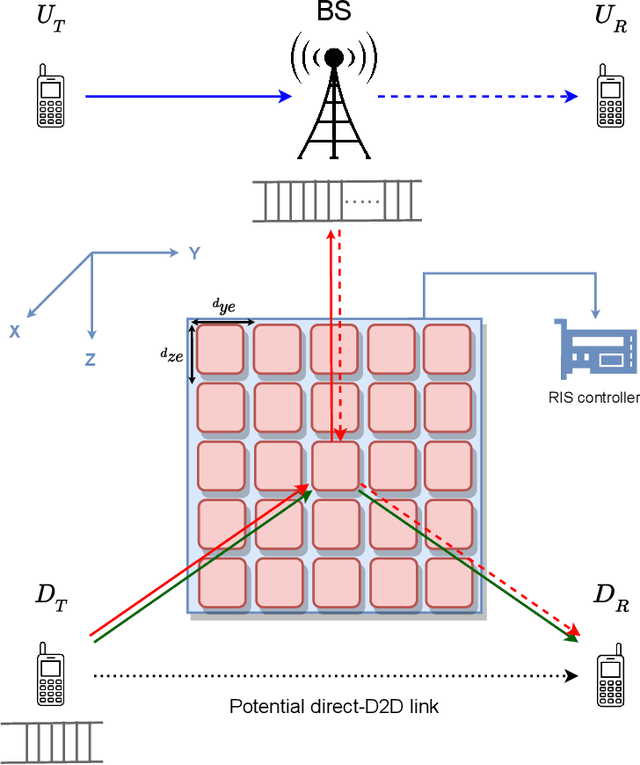
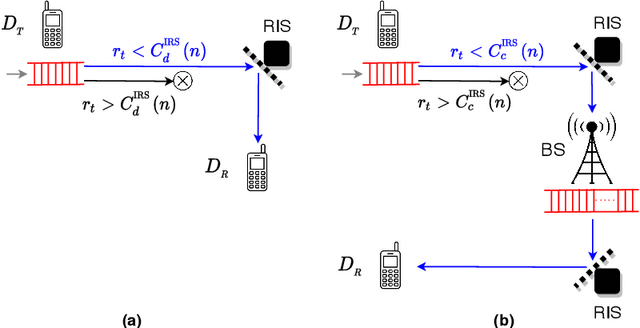
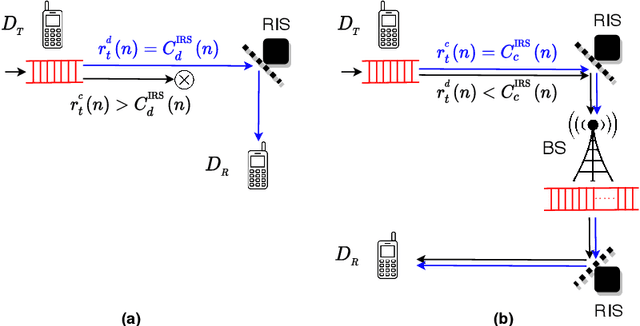
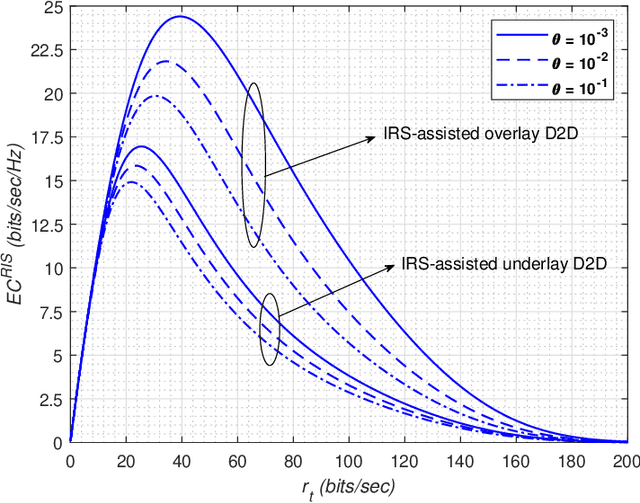
Abstract:This work performs the statistical QoS analysis of a Rician block-fading reconfigurable intelligent surface (RIS)-assisted D2D link in which the transmit node operates under delay QoS constraints. First, we perform mode selection for the D2D link, in which the D2D pair can either communicate directly by relaying data from RISs or through a base station (BS). Next, we provide closed-form expressions for the effective capacity (EC) of the RIS-assisted D2D link. When channel state information at the transmitter (CSIT) is available, the transmit D2D node communicates with the variable rate $r_t(n)$ (adjustable according to the channel conditions); otherwise, it uses a fixed rate $r_t$. It allows us to model the RIS-assisted D2D link as a Markov system in both cases. We also extend our analysis to overlay and underlay D2D settings. To improve the throughput of the RIS-assisted D2D link when CSIT is unknown, we use the HARQ retransmission scheme and provide the EC analysis of the HARQ-enabled RIS-assisted D2D link. Finally, simulation results demonstrate that: i) the EC increases with an increase in RIS elements, ii) the EC decreases when strict QoS constraints are imposed at the transmit node, iii) the EC decreases with an increase in the variance of the path loss estimation error, iv) the EC increases with an increase in the probability of ON states, v) EC increases by using HARQ when CSIT is unknown, and it can reach up to $5\times$ the usual EC (with no HARQ and without CSIT) by using the optimal number of retransmissions.
A Bibliometric Analysis of the Surveys in Blockchain
Sep 20, 2021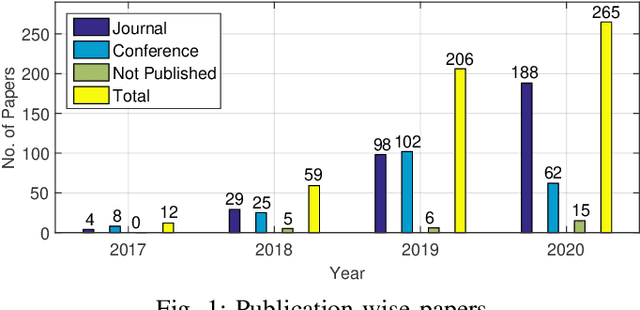
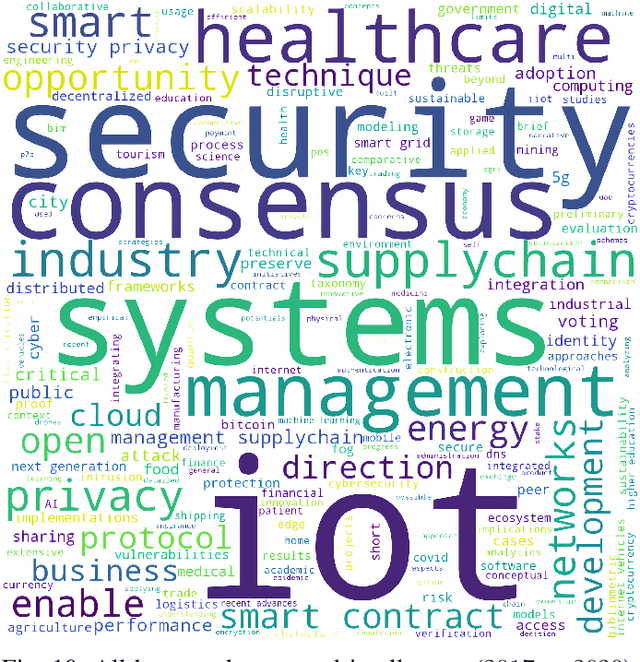
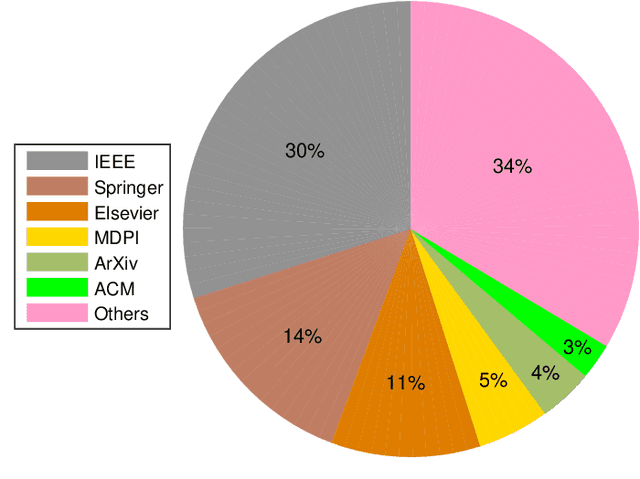
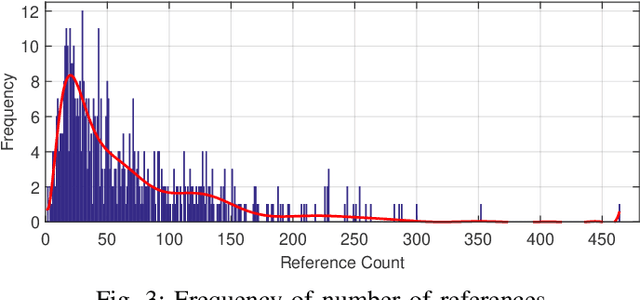
Abstract:Blockchain has become an emerging technology in the field of computer science and is used for asset security, anonymity, and verifiability, etc. Enormous use cases of blockchain, e.g., for making online payments, storing or sharing of private data in a tamper-proof way has attracted the research community in the past decade. In this regard, a lot of survey papers have been published focusing on the domain-specific exploratory study of applying blockchain in that particular domain. In this paper, we collected those survey papers published and collected $542$ unique papers covering the span of $2017$ to $2020$ published in different venues. We then perform a bibliometric study on those papers and provide interesting insights on different features extracted from that papers. We hope this study will serve as a valuable resource for the blockchain community.
Effective Capacity Analysis of HARQ-enabled D2D Communication in Multi-Tier Cellular Networks
Jul 26, 2021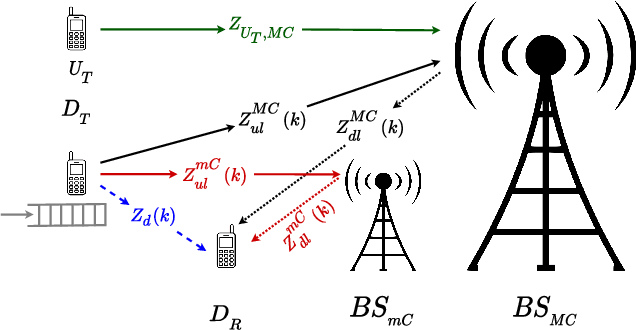
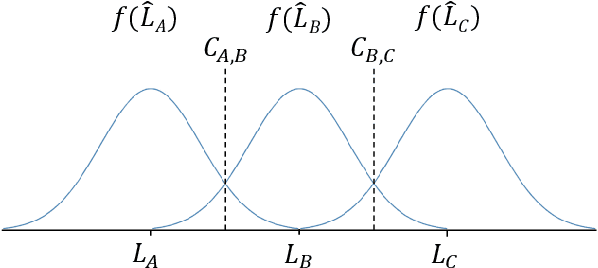
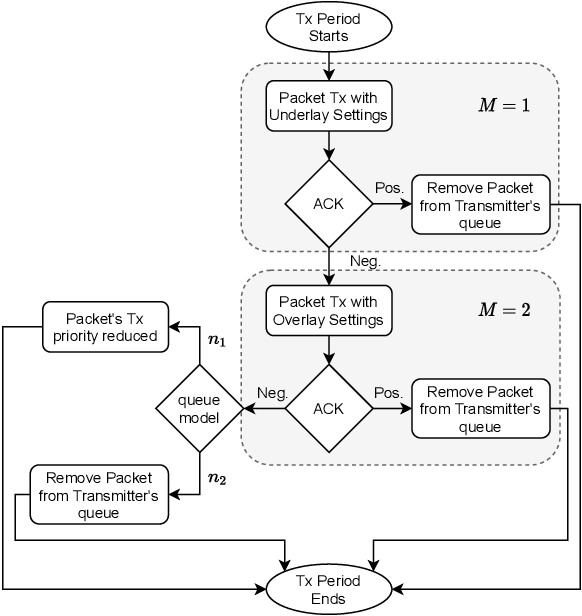
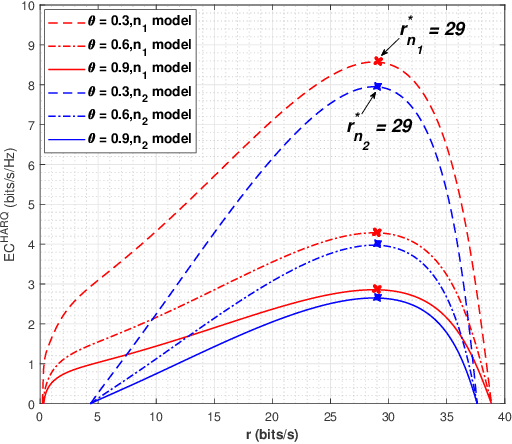
Abstract:This work does the statistical quality-of-service (QoS) analysis of a block-fading device-to-device (D2D) link in a multi-tier cellular network that consists of a macro-BS (BSMC) and a micro-BS (BSmC) which both operate in full-duplex (FD) mode. For the D2D link under consideration, we first formulate the mode selection problem-whereby D2D pair could either communicate directly, or, through the BSmC, or, through the BSMC-as a ternary hypothesis testing problem. Next, to compute the effective capacity (EC) for the given D2D link, we assume that the channel state information (CSI) is not available at the transmit D2D node, and hence, it transmits at a fixed rate r with a fixed power. This allows us to model the D2D link as a Markov system with six-states. We consider both overlay and underlay modes for the D2D link. Moreover, to improve the throughput of the D2D link, we assume that the D2D pair utilizes two special automatic repeat request (ARQ) schemes, i.e., Hybrid-ARQ (HARQ) and truncated HARQ. Furthermore, we consider two distinct queue models at the transmit D2D node, based upon how it responds to the decoding failure at the receive D2D node. Eventually, we provide closed-form expressions for the EC for both HARQ-enabled D2D link and truncated HARQ-enabled D2D link, under both queue models. Noting that the EC looks like a quasi-concave function of r, we further maximize the EC by searching for an optimal rate via the gradient-descent method. Simulation results provide us the following insights: i) EC decreases with an increase in the QoS exponent, ii) EC of the D2D link improves when HARQ is employed, iii) EC increases with an increase in the quality of self-interference cancellation techniques used at BSmC and BSMC in FD mode.
 Add to Chrome
Add to Chrome Add to Firefox
Add to Firefox Add to Edge
Add to Edge